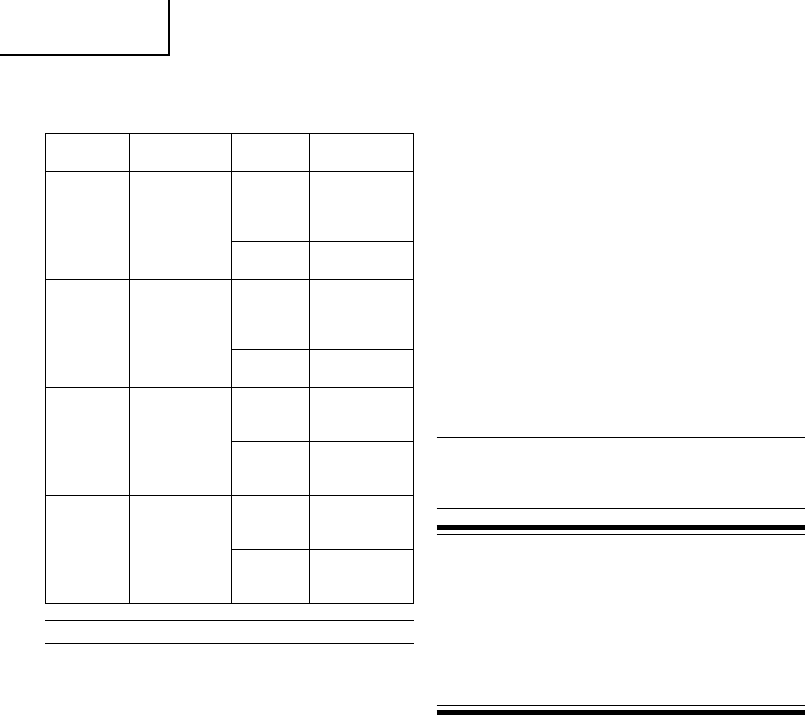
9
English
3. Selection of blades for other materials
Table 3
MAINTENANCE AND INSPECTION
1. Inspecting the blade
Continued use of a dull or damaged blade will
result in reduced cutting efficiency and may cause
overloading of the motor. Replace the blade with
a new one as soon as excessive abrasion is noted.
2. Inspecting the mounting screws
Regularly inspect all mounting screws and ensure
that they are properly tightened. Should any of the
screws be loose, retighten them immediately. Failure
to do so could result in serious hazard.
3. Maintenance of the motor
The motor unit winding is the very “heart” of the
power tool. Exercise due care to ensure the winding
does not become damaged and/or wet with oil or
water.
4. Inspecting the carbon brushes (Fig. 27)
The Motor employs carbon brushes which are
consumable parts. When they become worn to or
near the “wear limit”, it could result in motor trouble.
When an auto-stop carbon brush is equipped, the
motor will stop automatically.
At that time, replace both carbon brushes with new
ones which have the same carbon brush Numbers
shown in the figure. In addition, always keep carbon
brushes clean and ensure that they slide freely
within the brush holders.
5. Replacing carbon brushes
Disassemble the brush caps with a slotted-head
screwdriver. The carbon brushes can then be easily
removed.
6. Service parts list
A: Item No.
B: Code No.
C: No. Used
D: Remarks
CAUTION
Repair, modification and inspection of Hitachi Power
Tools must be carried out by an Hitachi Authorized
Service Center.
This Parts List will be helpful it presented with the
tool to the Hitachi Authorized Serivde Center when
requesting repair or other maintenance.
In the operation and maintenance of power tools,
the safety regulations and standards prescribed in
each country must be observed.
MODIFICATIONS
Hitachi Power Tools are constantly being improved
and modified to incorporate the latest technological
advancements.
Acccordingly, some parts (i.e. code numbers and/
or design) may be changed without prior notice.
NOTE
Due to HITACHI’s continuing program of research and
development, the specifications herein are subject to
change without prior notice.
Information concerning airborne noise and vibration
The measured values were determined according to
EN50144.
The typical A-weighted sound pressure level: 91 dB (A)
The typical A-weighted sound power level: 104 dB (A)
Wear ear protection.
The typical weighted root mean square acceleration
value: 16.8 m/s
2
Meterial Material Thickness
Blade No.
to be cut quality (mm)
Iron plate Mild steel 2.5 – 19 No. 1, 2, 101,
plate 102, 103, 104,
105, 106, 131,
132
Below 3.5 No. 3, 107,
108
Nonferrous Aluminium, 5 – 20 No. 1, 2, 101,
metal Copper and 102, 103, 104,
Brass 105, 106, 131,
132
Below 5 No. 3, 107,
108
Systhetic Phenol resin, 10 – 50 No. 1, 2, 4,
resin Melamine 101, 102, 103,
resin, etc. 104, 131, 132
5 – 30 No. 3, 5, 8,
105, 106, 107,
108
Systhetic
Vinyl chloride,
10 – 60 No. 1, 2, 4,
Acrylic resin, 101, 102, 103,
etc. 104, 131, 132
5 – 30 No. 3, 5, 8,
105, 106, 107,
108


















